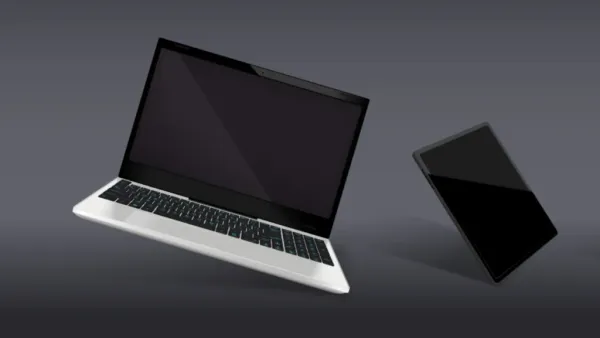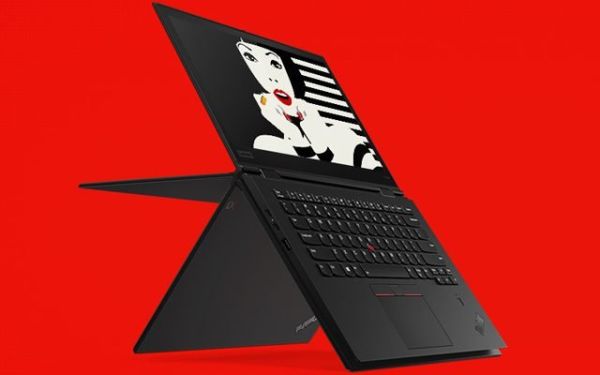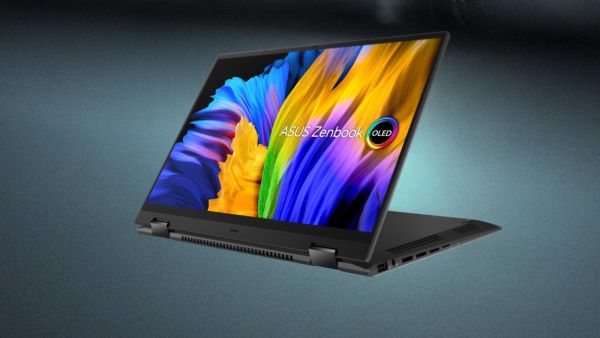
In the past, working remotely meant sacrificing in one area for the other: a thinner, lighter laptop that would be more portable or a more powerful, heavier laptop. But in 2025, the compromise has improved greatly – advanced silicon, efficient battery-friendly chips, new battery chemistry and OLED displays (among other advancements) have made it possible for manufacturers to provide truly portable machines capable of handling more demanding workflows.
Remote work includes large spreadsheets, video calls, VS Code, and light media editing, and long days away from a plug socket.

This guide identifies the best laptopsthe best categories, and the best models in each, so you can then choose your machine according to your priorities – battery life, weight, connectivity, durability, and repairability.
Before we dive into recommendations for specific models, here’s a quick checklist of must-haves for productivity on the road:
• A full day’s worth of battery life (~8 hours of mixed-use)
• Under ~1.3- -1.6 kg (2.8-3.5 lbs) to keep your carry-on easy and comfortable in your lap
• A good webcam and a good microphone (laptops are now, it seems, an all-in-one meeting kit)
• A fast, efficient CPU and enough RAM (ideally, 16GB) for multitasking
• Solid-state storage (512GB or more) and a long-operating cooling design
• Connectivity! At least a couple of USB-C/Thunderbolt ports, a full-size USB or HDMI connection when available, and Wi-Fi 6E or 7 if available.
• Durability or repair options if you get rough and tough – the ability to add a battery or a module creates a lot of options for long-haul travelers.

Apple’s MacBook Air in the latest silicon version is still the go-to choice for many remote workers. The M-series chips still have a clear performance-per-watt advantage – you have sustained CPU cores for editing and compiling without the fan noise; you also have elevated performance and strong battery life that can easily outlast competing Windows notebooks in real-world mixed workloads. The combination of thinness, battery life, great power management on macOS, and a wonderfully designed keyboard/touchpad creates a productive dream for creatives and general remote workflows.
For those needing to run macOS apps or wanting the longest battery life in a lightweight chassis, the MacBook Air family is hard to compete with. Who’s it for: macOS lovers, writers, managers, and designers seeking excellent battery life and quiet operation.
Dell’s XPS series still defines premium thin-and-light Windows laptops. The XPS 13 and “Plus” models feature great screens, a long-lasting battery in many configurations, and an ultra-compact form factor, making them a go-to choice for business travelers who use Windows. The XPS 13 is a good choice for a virtual, near-borderless, premium build and a small footprint.
Who’s it for: professionals who need premium Windows performance and portability.
The ThinkPad X1 Carbon is your classic road warrior: lightweight, whisper-thin, but built to a business spec with an excellent keyboard and a long list of manageability options. It may not be the outright fastest for GPU-heavy workloads, but it’s ergonomically designed for long typing sessions and excels with video calls and enterprise deployments.
Lenovo’s latest X1 Carbon continues the legacy while improving thermal efficiency and battery for traveling case use.
Who it’s for: corporate users, those with long typing sessions, and Linux users who value reliability.

If you need something, you can repair it yourself while traveling – swap a battery, upgrade the SSD, and/or replace a broken keyboard. The Framework Laptop 13 is built on modularity and repairability. While it’s a bit thicker than the very thinnest ultrabooks, it wins out on sustainability and future-proofing. If you are a traveler expecting multi-year use or going off the grid and can’t rely on dealer service, this is your practical option.
Who it’s for: long-term travel style, repair-minded, sustainability-minded.
The ASUS ZenBook set and Samsung Galaxy Book Pro models were tuned to maximize battery life in thin designs and at reasonable prices. ZenBooks often have strong price-to-spec ratios and battery life, making them a good choice. The Galaxy Book family has a reasonable price and a solid battery, and is a strong combo for people who own an Android mobile device. The recent 2025 roundups highlighted the ASUS ZenBook family and the Samsung Galaxy Book as strong/value performers for compact travel style and strong battery life.
The Galaxy Book family from Samsung is a good choice for anyone immersed in the Android community, featuring great AMOLED screens in lightweight packages. The 2025 roundup we completed recently rated both families as solid travel partners when you need value and battery life.

• If running Windows-only apps, for some enterprise or engineering tools, prioritize the highest-end XPS, ThinkPad, or Microsoft Surface Laptop.
• If doing any creative work (video/photo), prioritize an M-series MacBook Pro, or a high-TDP Windows laptop, but they’ll cost you weight and battery life
. • Think about docks or a single Thunderbolt hub to alleviate the hassle of hunters-and-gatherers of dongles. You should pack a hub that has power delivery and will support dual displays if you don’t already have one, as it’s something I never travel without.
• Consider insurance & spare chargers: pack a charger that can support multiple voltages and also a slim power bank that’s compatible with your laptop, keeping airline regulations in mind, of course.

Choose the MacBook Air (M4 family) for the best combination of battery life and everyday performance, the Dell XPS 13 for premium Windows portability, the ThinkPad X1 Carbon for business durability, and a Framework laptop if serviceability and longevity are the most important factors and you’re OK with extra weight and dimensions. For most remote workers and travellers, the range of devices covers the ultra-portable to repairable and reliable on the 2024–25 product maturity scale.